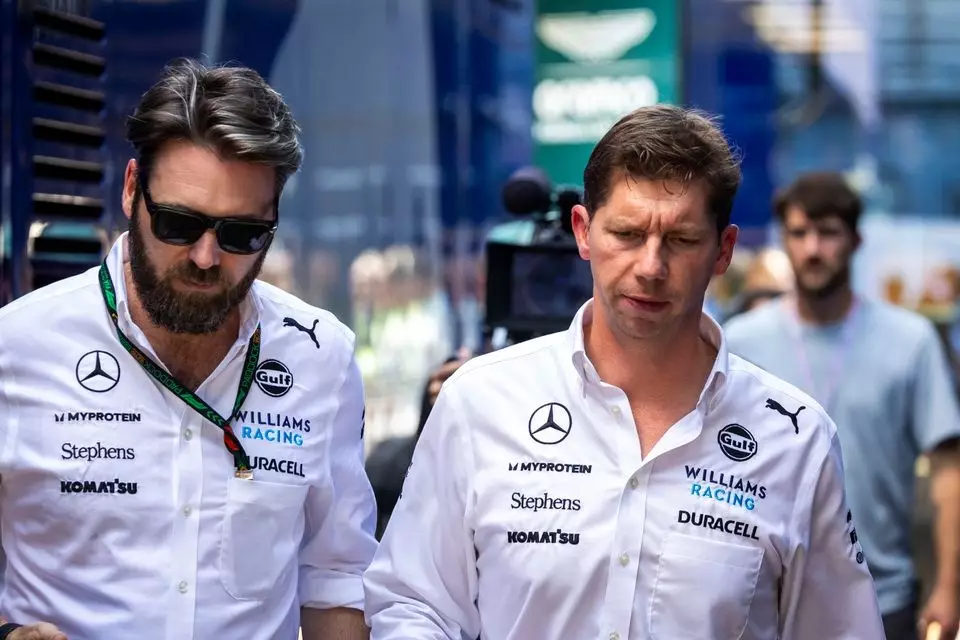The world of Formula 1 is defined not just by speed, but by strategic foresight, and this is particularly true for the Williams Racing team as they look ahead to the 2025 season. Team principal James Vowles has openly acknowledged the turbulent waters that lie ahead for the British Formula 1 outfit. With a significant regulatory shift slated for 2026, Williams finds itself at a crossroads: invest in the future at the risk of a tough 2025 campaign or maintain the status quo, which has proven challenging in recent years.
Historically, Williams has struggled to maintain its former glory in the highly competitive environment of F1. Aside from the tumultuous 2021 Belgian Grand Prix, the team hasn’t found itself in the top five since 2017. The Williams family legacy encountered substantial financial turbulence, which stunted the team’s growth and competitive edge. However, with the acquisition by Dorilton Capital, there is a renewed semblance of financial health; investments are being funneled into both the aerodynamic design of cars and the crucial infrastructure of the team. This financial support offers Williams a tangible opportunity to break the cycle of underperformance and capitalize on new regulations.
Vowles has emphasized that the upcoming 2025 season will serve as a testing ground, a necessary sacrifice in pursuit of future gains. His candid remarks underline a strategic decision to avoid short-term success that could ultimately hinder long-term objectives. This aligns with Vowles’ vision of developing more sophisticated technological solutions in preparation for the fundamental changes set to occur in 2026.
The decision to potentially regress in 2025 can be seen as a radical yet courageous stance. Williams’ trajectory appears to have been carefully plotted: they are deliberately opting for a “trial-and-error” methodology. Vowles’ statement that they aim to make “leaps rather than steps” highlights an ambition towards groundbreaking innovation rather than mere incremental improvements. This approach may induce setbacks, but Vowles remains unfazed. The integral belief is that even mistakes can be valuable learning experiences that contribute to a more robust and competitive package in 2026.
Moreover, this philosophy speaks to a larger trend within the sport, where adaptability and rapid evolution are paramount. In an ever-changing technological landscape, teams that fail to innovate risk stagnation. Vowles’ openness about potential “tripping” is symptomatic of a progressive mindset that embraces risk in exchange for future success.
The 2023 season revealed glimpses of potential for Williams, as they edged out competitors like AlphaTauri for seventh place in the Constructors’ Championship. However, the struggle for points earlier in the season reflected ongoing issues. The FW46 car’s weight concerns were a significant factor, and with subsequent improvements, both Alex Albon and Franco Colapinto demonstrated promising results in high-profile races, such as the thrilling round in Baku.
Yet, the narrative is far from simple. Vowles’ candid reflections on last season illustrate the fine margins in F1 where a single strategic decision can dramatically alter championship standings. Finishing seventh might have seemed a triumph, but Vowles candidly admitted a fortuitous mix of circumstance played into this outcome. Such remarks display not only an analytical approach but also a dose of realism about the persistent challenges faced.
As the Williams team braces for a challenging 2025 season, expectation management becomes critical. Understanding that they may not see immediate results allows a more realistic approach to performance. Vowles has made it clear that the team might “move back a little bit,” reiterating that this should not be perceived as an ultimate failure, but rather a strategic retreat necessary for preparing better for the upheaval in 2026. The call to embrace a tougher season with an eye on future advancements signals a turning point within Williams Racing.
Ultimately, the 2025 season serves as a litmus test for the Williams team—balancing short-term struggles against the backdrop of long-term aspirations. With its current path paved by new investment and a robust strategy spearheaded by Vowles, Williams stands at a pivotal moment, poised for potential resurgence in Formula 1’s ever-evolving landscape. If this gamble pays off, Williams could rewrite its narrative in a sport that constantly demands reinvention and resilience.


Leave a Reply